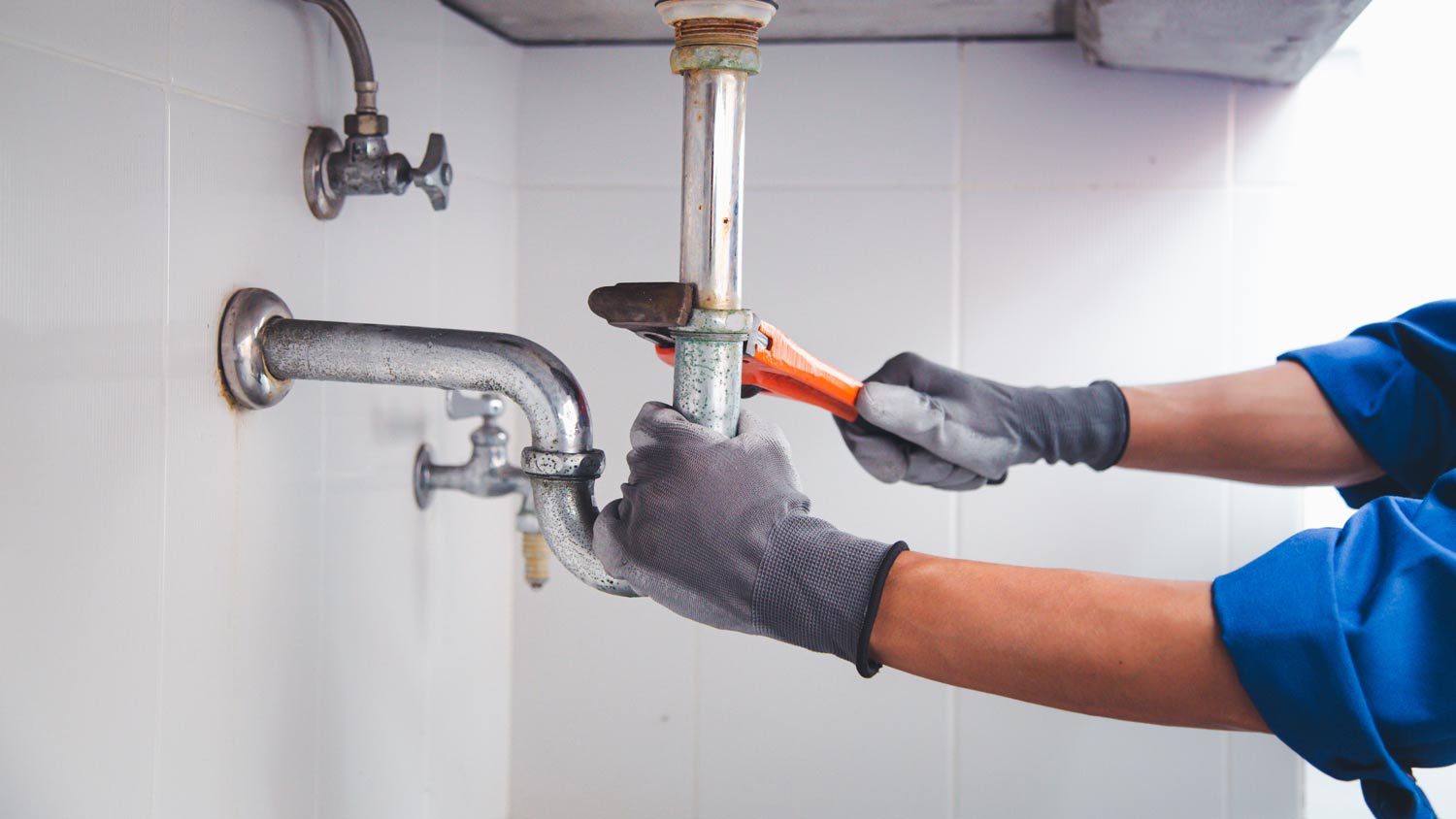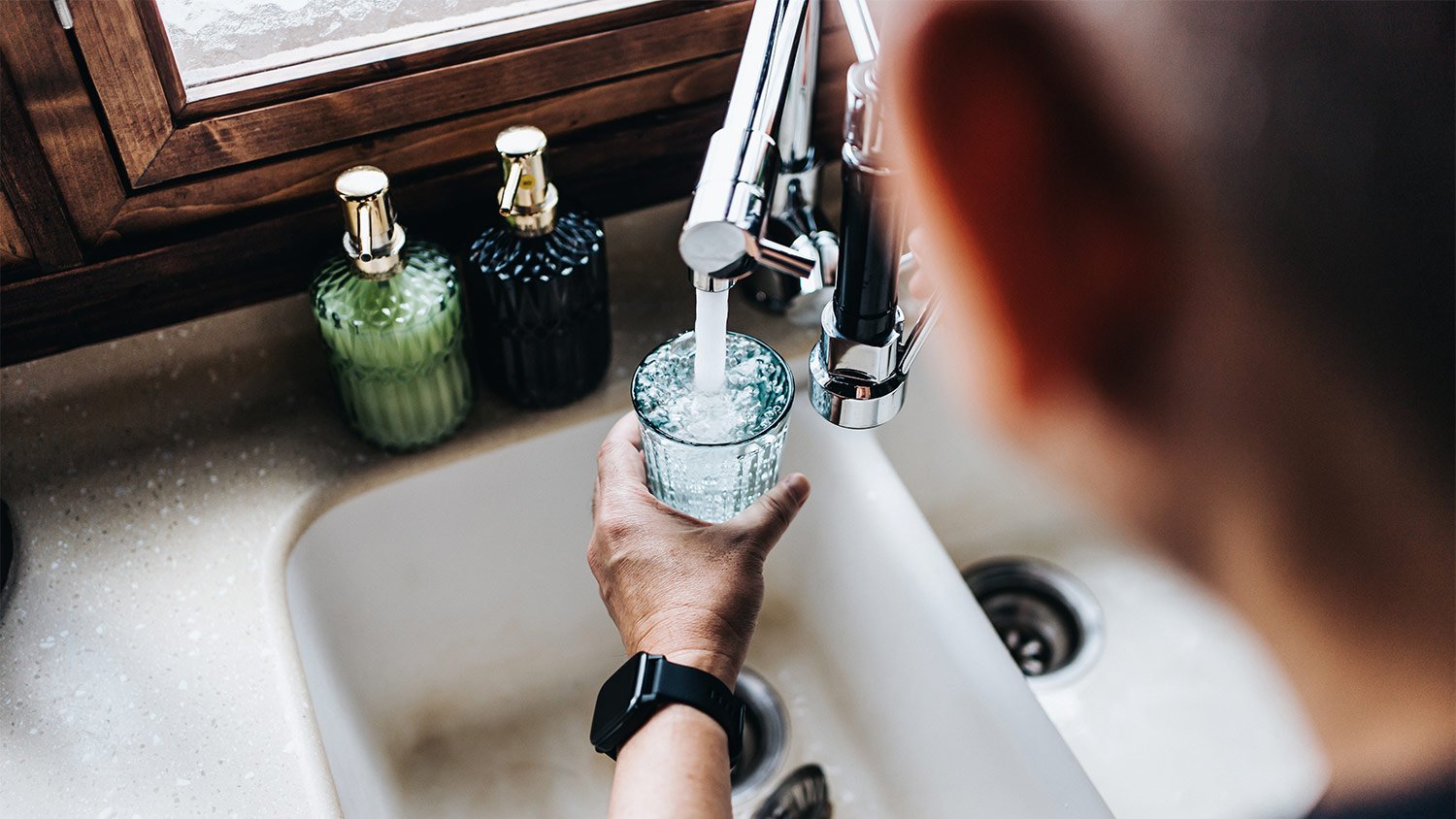
If you have a clogged pipe and natural methods are not working, you may need something stronger. How do drain cleaners work? Find out in this guide.
The cost to replace drain pipes in a house averages between $225 and $1,169, with most homeowners spending $696. Your price depends on pipe length, material, and accessibility.


The cost to replace drain pipes in a house depends on pipe material, length, and accessibility.
Permits and inspections may be required for whole-house pipe replacement, costing $150 to $700.
Professional installation costs $45 to $200 per hour and ensures code compliance and long-term reliability.
The return on investment (ROI) for a whole-house replacement is 50% to 70%.
This article was created using automation technology and thoroughly fact-checked and edited by an Angi Editor in accordance with our AI policy.
The average cost to replace drain pipes in a house ranges from $225 to $1,169, with an average price of $696 for a standard home. Homeowners can expect to pay $150 to $250 per linear foot, depending on the material and complexity of the project. Factors like pipe location and accessibility can significantly impact your total cost.
Replacing drain pipes is essential for protecting your home from leaks and water damage. This guide covers what impacts your project cost, explains your options, and helps you budget for a safe, lasting upgrade.
The cost to replace drain pipes in a house is shaped by several key factors, including materials, location, labor, permits, and project complexity. Here’s a closer look at how your total breaks down.
The materials your drain pipes are made from impact their replacement costs. PVC pipes are the most affordable, while cast iron pipes are the most expensive. Here’s a look at the average costs per linear foot for common drain pipe materials.
| Pipe Material | Average Cost per Linear Ft. (Materials Only) |
|---|---|
| PVC | $0.50–$8 |
| Polypropylene | $1–$15 |
| Cast iron | $5–$20 |
| Copper | $2–$15 |
| Galvanized | $2–$8 |
The size of your home and the extent of the project have a direct impact on the cost to replace drain pipes in a house. The total length of drain pipes needed increases with larger homes, more bathrooms, and additional plumbing fixtures. For example, a small home with one bathroom will require fewer linear feet of pipe than a multi-story house with several bathrooms and a finished basement.
Partial replacements, such as updating only the kitchen or a single bathroom, cost less than fully replacing all drain pipes throughout the house. Multi-story homes or those with complicated layouts may also see higher costs due to added pipe length and installation challenges.

Different types of drain pipe replacement projects have unique cost impacts. Full house replacements involve removing and replacing all drain lines, which is more expensive than updating a single bathroom or kitchen. Homes with slab foundations often require more labor and specialized equipment, increasing the price compared to homes with crawlspaces or basements.
| Project Scope | Description | Average Cost |
|---|---|---|
| Minor repairs | Update leaking, clogged, or burst pipes in accessible area (e.g. under bathroom sink) | $100–$800 |
| Major repairs | Under foundation or basement drain pipes with difficult access | $800–$8,000 |
Replacing pipes under a slab foundation or inside walls is more labor-intensive and costly than work in a crawlspace or unfinished basement. Here’s a comparison of average replacement costs in various locations in your home.
| Room | Average Cost |
|---|---|
| Kitchen | $150–$500 |
| Bathroom | $100–$10,000 |
| Basement or crawlspace | $800–$8,000+ |
Where you live and where the pipes are located in your home both influence the final price. Labor and material costs tend to be higher in urban areas than rural ones. Local building codes and permit requirements can also add to the total expense.
Labor is a major portion of the project budget. You’ll need a licensed plumber, and in some cases, a general contractor for demolition or restoration. Plumber hourly rates range from $45 to $200 per hour, with minimum service fees of $150 to $300. These rates can be higher in unionized or metropolitan areas, or for projects needing extra demolition, restoration, or specialty work. Emergency replacements due to sudden pipe failure also tend to cost more because of urgent scheduling and potential after-hours labor.
Replacing drain pipes often requires permits from your city or municipality. Permit costs range from $100 to $500, depending on your location and the project’s complexity. Some areas also require separate inspection fees, which can add another $50 to $200 per inspection. The permit process may take anywhere from a few days to several weeks, so it’s best to factor this into your timeline.
Upgrading to higher-quality or longer-lasting pipe materials, such as cast iron or specialty PVC, increases your upfront investment but can reduce long-term maintenance. Adding features like cleanouts, backflow preventers, or access panels also raises the initial cost but improves future accessibility and safety. Integrating drain pipe replacement with other plumbing upgrades, like new fixtures, may save on overall labor.
Custom routing or modifications to improve accessibility can require extra materials and time, further increasing costs.
Project complexity plays a significant role. Rerouting pipes or working around existing structures, such as finished walls or built-ins, takes more time and labor. Accessibility issues—such as pipes under slabs, behind walls, or in tight crawlspaces or basements—add to the challenge and cost. Site preparation, including demolition, excavation, debris removal, and delivery of materials, is another expense.
After the pipes are replaced, you may need post-construction cleanup and restoration, like drywall repair or landscaping. For complex projects, design or engineering fees may apply. Inspection costs before, during, and after installation add to the total, so plan accordingly.
Replacing drain pipes can come with a few additional expenses beyond the installation itself.
Many pipe manufacturers and contractors offer warranties on new drain pipes, covering materials and labor for a set period—often five to 25 years. Extended warranties or service plans are sometimes available for an added cost, offering extra peace of mind. Warranties can reduce long-term repair or replacement expenses if issues arise.
New drain pipes may lower your ongoing water and sewer utility bills by improving drainage and reducing leaks. Some homeowners notice a decrease in home insurance premiums after major plumbing upgrades, especially if you’ve eliminated old, high-risk materials.
Even new drain pipes need regular care. Schedule periodic inspections and professional cleaning to prevent buildup and clogs. Annual maintenance costs depend on the pipe material but ranges from $100 to $300. Watch for slow drains, bad odors, or water stains—these could signal a problem requiring prompt attention.
Sales tax on materials and labor may apply, depending on your state. Local tax rates can influence your total project cost, so check with your contractor for a detailed estimate that includes taxes.
Homeowners insurance rarely covers the cost to replace drain pipes in a house due to normal wear and tear. However, it may pay for water damage caused by sudden pipe failure. To file a claim, document all damage and contact your insurer right away. After replacing old pipes, your premiums might decrease, especially if you’ve resolved a known risk.
Deciding whether to tackle drain pipe replacement yourself or hire a professional depends on your experience, the project’s scale, and your comfort with plumbing codes.
DIY drain pipe replacement can significantly reduce labor costs, saving you hundreds or even thousands of dollars—especially for small, accessible sections. However, you’ll need the right skills, tools, and safety gear. Material costs are similar for DIY and professional jobs, but you’ll spend more time on planning and execution. Most homeowners spend several weekends on a DIY project of this size.
Risks include improper installation, leaks, water damage, and failing inspections. DIY is best reserved for minor, easily accessible repairs; for whole-house or complex projects, hiring a pro is strongly recommended.
Professional drain pipe replacement includes the cost of labor, permits, and warranties. Hiring a licensed plumber ensures the job meets code requirements and is covered by warranty, reducing your risk of future issues. Contractors also have access to bulk materials and can complete the job more quickly.
When choosing a contractor, check credentials, references, and insurance. Compare multiple quotes for the best value.
Not all drain pipe problems require a full replacement. Sometimes, a simple repair is enough, especially if the damage is isolated.
Repair is suitable for small leaks or minor damage. If your pipes are corroded throughout, frequently clog, or are made from outdated materials (such as galvanized steel or old cast iron), replacement is the better investment. The age of your pipes, material type, and warranty status can guide your decision.
Use the 50% rule: If the repair cost is more than half the price of replacement, opt for a full replacement to avoid recurring issues.
Replacing drain pipes is a smart investment in your home’s safety and value. While the average return on investment (ROI) for whole-house drain pipe replacement ranges from 50% to 70%, the benefits go beyond resale value. New pipes reduce the risk of water damage, improve drainage efficiency, and make your home more attractive to buyers.
Compared to other major plumbing upgrades, replacing drain pipes can offer a strong return—especially if your home has older, problematic pipes. Upgrades boost insurance ratings, reduce premiums, and help your home pass inspections more easily. Modern, durable pipes also support universal design and future accessibility needs.
Consider these cost-saving strategies to make your pipe replacement project more budget-friendly:
Get multiple quotes from licensed local drain pipe installers to compare pricing.
Choose cost-effective, code-compliant pipe materials.
Schedule replacement during off-peak seasons for potential discounts.
Handle minor demolition or site prep yourself, if safe and feasible.
Bundle drain pipe replacement with other plumbing upgrades to save on labor.
Maintain new pipes regularly to avoid future costly repairs.
Home is the most important place on earth, which is why Angi has helped more than 150 million homeowners transform their houses into homes they adore. To help homeowners with their next project, Angi provides readers with the most accurate cost data and upholds strict editorial standards. We extensively research project costs to develop the pricing data you see, so you can make the best decisions for you and your home. We rely on reputable sources, including the U.S. Bureau of Labor Statistics, academic journals, market studies, and interviews with industry experts—all to ensure our prices reflect real-world projects.
Want to help us improve our cost data? Send us a recent project quote to [email protected]. Quotes and personal information will not be shared publicly.
From average costs to expert advice, get all the answers you need to get your job done.

If you have a clogged pipe and natural methods are not working, you may need something stronger. How do drain cleaners work? Find out in this guide.

How do I drain the water lines in my house? This guide will walk you through it in five simple steps, along with tips to prevent damage to your plumbing.

Sewer gas from your kitchen plumbing can create unpleasant odors and health risks. Learn how to identify, remove, and prevent sewer gas issues in your home.

If you've been dealing with standing water in your shower, don't fret. Read this guide to find out how to unclog a shower drain with standing water.

Find out the average cost to remove roots from pipes, what impacts pricing, and expert budgeting tips for root removal, and protect your plumbing.

Knowing how to snake a basement floor drain is an important DIY skill for homeowners. Our guide gives a step-by-step process to clean your basement drain.